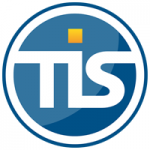Financing your international trade – documentary collections
| 04-04-2018 | Lionel Pavey |

Acquiring the right goods at the right price can eventually lead a company to overseas markets. International trade has certain barriers – buyers and sellers have never met and are reluctant to completely trust each other; drawing up documentation can be difficult and time consuming due to difference in law between 2 countries; agreement has to be made on the settlement currency; documentation that implies ownership needs to be sent, but the seller is hesitant to have these released to the buyer before payment has been made. This article looks at 1 of the 3 main financial instruments used in international trade – the documentary collection (DC).
What is the process?
1 – Buyer and seller agree terms and conditions for a trade to take place – the means of payment, the collecting bank (this is usually the house bank of the buyer), a detailed description of the set of documents that have to supplied.
2 – The seller (exporter) arranges for shipment of the goods to the buyer (importer) via a shipping agent and receives a transport document (usually a bill of lading) that is negotiable.
3 – The seller prepares the agreed documents into 1 package and presents these to his bank (the remitting bank). This will include the bill of lading, certificates of origin, inspection notices, a collection order stating the terms and conditions under which the bank can release the documents etc. and a draft.
4 – The remitting bank will send these documents to the collecting bank instructing the collecting bank to present the documents to the buyer and to collect the payment.
5 – The collecting bank will inspect the documents and the contract, ensuring that they are in compliance with the collection order.
6 – The collecting bank will contact the buyer stating that the documents are in order, or what discrepancies have been established; and inform the buyer about the terms and conditions of the collection order.
7 – The buyer will be shown the documents and asked to accept them. Acceptance is recognised by signing the draft. When the documents are accepted, and payment is made then the documents are handed over to the buyer.
8 – Release of the documents occurs in 2 ways – documents against payment is when payment is made at sight of the documents; and documents against acceptance is when payment is made at an agreed date in the future.
9 – The buyer takes possession of the documents allowing them to receive the goods from the warehouse or port where they are being stored.
10 – The collecting bank arranges to pay the remitting bank either immediately in the event of a sight bill, or at the agreed future date in the event of an acceptance bill.
11 – The remitting bank arranges to credit the account of the seller.
So it is a letter of credit?
No, a documentary collection is an alternative to a letter of credit. In a DC, the banks undertake no guarantee role – they merely advise, release documents and effect payments. If a buyer does not agree to the documents, they do not receive the goods, the banks do not effect payment and the seller is out of pocket. Therefore a DC is normally far cheaper than a LC.
Why use a DC?
Both buyer and seller know each other and are happy with their existing relationship.
The collections are for a one-off transaction – there is no open account between the parties.
The seller has faith in the economic and political characteristics of the importing country.
A LC is not acceptable to both parties.
Documentary collections are governed by the Uniform Rules for Collections as issued by the International Chamber of Commerce.

Cash Management and Treasury Specialist

 Treasury Intelligence Solutions GmbH (TIS)- a partner of treasuryXL, are organising a very engaging event that is being held in Amsterdam on Tuesday 27th March 2018, for corporate treasury. We have been kindly invited to attend and shall report back to you later, with our thoughts and experiences on what promises to be an interest evening. Read on for more information about this event and sign up if you find this event relevant to you and your company.
Treasury Intelligence Solutions GmbH (TIS)- a partner of treasuryXL, are organising a very engaging event that is being held in Amsterdam on Tuesday 27th March 2018, for corporate treasury. We have been kindly invited to attend and shall report back to you later, with our thoughts and experiences on what promises to be an interest evening. Read on for more information about this event and sign up if you find this event relevant to you and your company. In January 2018, Carillion – a British construction, engineering and facilities company – entered into liquidation. They had been in existence since 1999 after a demerger from Tarmac, which had been founded in 1903. They were the second largest construction company in the British isles, employing more than 40,000 people and were listed on the London Stock Exchange. They were known for their role in Private Finance Initiative (PFI) schemes – a form of Government outsourcing. Their insolvency has led to the loss of jobs, shutdowns of ongoing projects, and financial losses to more than 25,000 pensioners and 30,000 suppliers.
In January 2018, Carillion – a British construction, engineering and facilities company – entered into liquidation. They had been in existence since 1999 after a demerger from Tarmac, which had been founded in 1903. They were the second largest construction company in the British isles, employing more than 40,000 people and were listed on the London Stock Exchange. They were known for their role in Private Finance Initiative (PFI) schemes – a form of Government outsourcing. Their insolvency has led to the loss of jobs, shutdowns of ongoing projects, and financial losses to more than 25,000 pensioners and 30,000 suppliers. The BEPS (base erosion and profit shifting) initiative is an OECD initiative, approved by the G20, to identify over a period to December 2015, ways of providing more standardised tax rules globally. Phases two and three involve implementation and monitoring (together with some remaining standard setting and clarification). BEPS is a term used to describe tax planning strategies that rely on mismatches and gaps that exist between the tax rules of different jurisdictions, to minimise the corporation tax that is payable overall, by either making tax profits “disappear” or shift profits to low tax operations where there is little or no genuine activity. In general BEPS strategies are not illegal; rather they take advantage of different tax rules operating in different jurisdictions, which may not be suited to the current global and digital business environment.
The BEPS (base erosion and profit shifting) initiative is an OECD initiative, approved by the G20, to identify over a period to December 2015, ways of providing more standardised tax rules globally. Phases two and three involve implementation and monitoring (together with some remaining standard setting and clarification). BEPS is a term used to describe tax planning strategies that rely on mismatches and gaps that exist between the tax rules of different jurisdictions, to minimise the corporation tax that is payable overall, by either making tax profits “disappear” or shift profits to low tax operations where there is little or no genuine activity. In general BEPS strategies are not illegal; rather they take advantage of different tax rules operating in different jurisdictions, which may not be suited to the current global and digital business environment. Leningen worden vaak gezien als een goede manier om lange termijn investeringen te financieren. Een (gecommitteerde) meerjarige lening levert veelal zekerheid voor de middellange termijn. “Voor meerdere jaren vastgelegd” blijkt in de praktijk vaak niet waar te zijn. Leningen worden afgesloten als een aanvullende vorm van financieren, naast rekening courant, lease en/of andere leningen. Hoewel het aangaan van de meerjarige financiering ‘an sich’ niet heel risicovol hoeft te zijn, zijn de voorwaarden dit soms wel.
Leningen worden vaak gezien als een goede manier om lange termijn investeringen te financieren. Een (gecommitteerde) meerjarige lening levert veelal zekerheid voor de middellange termijn. “Voor meerdere jaren vastgelegd” blijkt in de praktijk vaak niet waar te zijn. Leningen worden afgesloten als een aanvullende vorm van financieren, naast rekening courant, lease en/of andere leningen. Hoewel het aangaan van de meerjarige financiering ‘an sich’ niet heel risicovol hoeft te zijn, zijn de voorwaarden dit soms wel.
 My father was a civil engineer and would have liked one of his kids to follow in his footsteps. Regretfully for him we all went in different directions, me landing an engineering degree of the wrong type. What I did like to learn from my first business management professor was about creating bridges between various functional areas. That is what I have been doing as a recruiter for almost 25 years, the last 8 solely in corporate treasury. Why treasury?
My father was a civil engineer and would have liked one of his kids to follow in his footsteps. Regretfully for him we all went in different directions, me landing an engineering degree of the wrong type. What I did like to learn from my first business management professor was about creating bridges between various functional areas. That is what I have been doing as a recruiter for almost 25 years, the last 8 solely in corporate treasury. Why treasury?



 The DACT (Dutch association of Corporate Treasurers) will be holding their annual Treasury Fair in Noordwijk at the Hotel van Orange on 23rd and 24th November 2017 – the most important annual treasury event in the Netherlands. Discover treasury best practices, learn about the latest trends and exchange experiences. It will contain 9 practical workshops throughout the day on topics including, trade finance, supply chain finance, liquidity forecasting, cyber security and the Blockchain. There are more than 50 exhibitors present at the Trade Fair including Cashforce – a partner of treasuryXL, who are also presenting a Workshop.
The DACT (Dutch association of Corporate Treasurers) will be holding their annual Treasury Fair in Noordwijk at the Hotel van Orange on 23rd and 24th November 2017 – the most important annual treasury event in the Netherlands. Discover treasury best practices, learn about the latest trends and exchange experiences. It will contain 9 practical workshops throughout the day on topics including, trade finance, supply chain finance, liquidity forecasting, cyber security and the Blockchain. There are more than 50 exhibitors present at the Trade Fair including Cashforce – a partner of treasuryXL, who are also presenting a Workshop.
